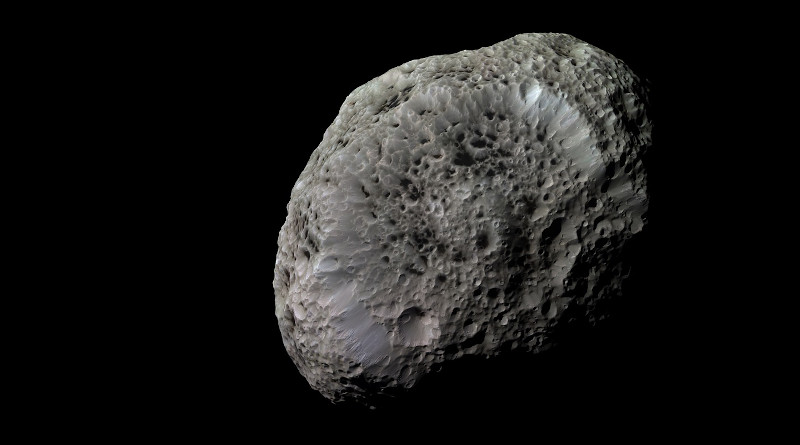First Space Mining Projects Moving Ever Nearer – Analysis
When looking up at the stars, it is worth thinking of the stellar economic field of opportunity that awaits us. A revolution is already occurring and space is only going to become even more accessible over the coming decades.
Multiple countries are developing the ability to mine in space, specifically on the moon and on asteroids. The moon stands out as a nearby example of what will soon be the site of regular operations. Asteroid exploration, as demonstrated by landings and core sampling, will be the next stage of extraterrestrial economics.
The idea of an extraterrestrial economy is not new, but is being thought about and acted upon with increasing vigor. SpaceX and Blue Origin, along with NASA and the European Space Agency, are all aiming for this space ecosystem. Japan and China also have their own highly respected programs for space mining and economics. The nascent asteroid mining industry, worth an estimated $712 million in 2017, could reach $3.9 billion by 2025.
The Outer Space Treaty of 1967 governs the use of space, but is increasingly being overtaken by the emerging extraterrestrial economy and frameworks that govern space use. In the US, the Commercial Space Launch Competitiveness Act of 2015 pursues a legal framework that facilitates commercial moon and asteroid mining through bilateral space exploration agreements with countries such as Luxembourg, Italy and the UAE. These countries are also working with Japan and its space agency. Tokyo successfully landed its Hayabusa2 spacecraft on the asteroid Ryugu in 2019 and the ongoing activity of many of these countries shows that the use of the near-Earth cosmos is changing rapidly.
Paying attention to the extraterrestrial modeling concept cannot ignore Earth-bound support operations. A country with Earth-bound logistical projects that expand and unfold via land and sea networks are support networks for its efforts in space. Some countries are looking at moon-based mining and operations from the lunar surface. The point is that the celestial economy is an extension of land-based logistical ecosystems. As seen in a three-dimensional model, the roots of the Earth-bound logistics network extend into space via the moon and onward to Mars and is seen as the next geopolitical projection.
Given its location, the moon is significant to this type of economic planning. The moon is home to hundreds of billions of dollars-worth of natural resources, including helium-3, titanium and other rare-earth metals. But asteroids are also important targets for mining operations. According to research, it is estimated that a small asteroid roughly 200 meters in length that is rich in platinum could be worth up to $300 million. So-called rare-earth metals are also the potential targets of asteroid miners intending to service Earth markets. A key list of 17 elements, including lanthanum, neodymium and yttrium, are in high demand. Asteroids may be a crucial source of many of the minerals that are key to a low-carbon economy. How property rights are applied in space are just as important as these regulations are on Earth and are part of the geopolitical picture.
There is an argument that mining asteroids is a necessary component of geopolitical and economic competitiveness in the coming two decades. The estimates are that, by 2040, the global space economy could be worth $1 trillion. With the prospects of space mining being driven by technological advances across the space industry, the use and perfection of reusable rocket components and advances in producing off-the-shelf parts are making costs lower for new space activities, including commercial use, such as space tourism.
The costs are going to be off the charts, but efforts to lower costs are underway. Technology that allows savings on the costs of water and fuel are being worked on. It is likely that on-site resource utilization through crewed and robotic exploration on the moon in the 2020s and Mars in the 2030s is going to be a jump-start for true space mining.
The construction of moon bases from local materials could greatly reduce supply chain requirements from Earth.
Within the emerging space mining ecosystem, there are already interesting issues emerging. For example, labor issues and the hazards of space mining are being addressed by scholars. According to research, the stages of a space mining operation resemble those of terrestrial mining, with prospecting followed by extraction, processing and distribution to users.
Most space mining targets have no atmosphere and experience extreme temperature swings between shade and sunlight. Radiation, from both the sun and cosmic sources, saturates the space environment and threatens electronics and human health. Due to these hazards, technological advances for worker protection are of vital importance, in conjunction with space labor law.
Overall, the prospects for space mining are bright in the long term, but there are a host of legal issues that need to be addressed as the industry grows. Competition between various mining programs will be a regular and necessary part of this space economy ecosystem.

